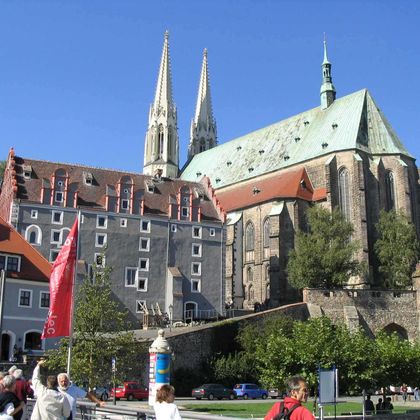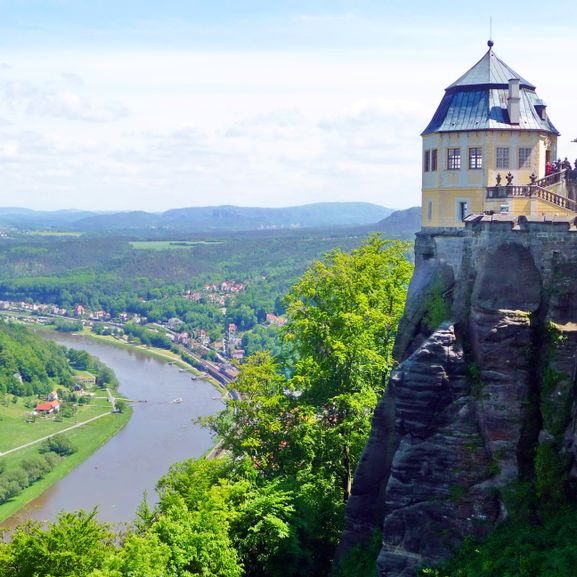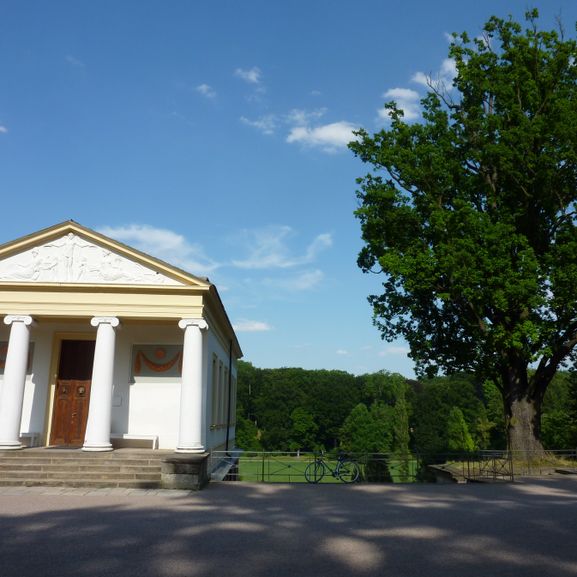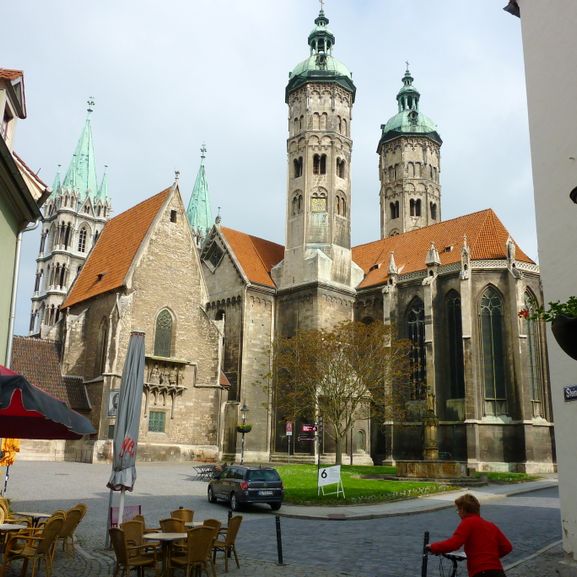From south to north, between west and east.
Biking vacations on the Oder-Neiße bike trail
Oder and Neisse – a tour along these rivers, which form the border between Germany and Poland fascinates most of all by it´s unique orientation by nature. The woods of the hilly countryside along the river Neisse are reflected by the river and give a blaze of colour. Again and again you cycle many kilometres in complete seclusion and silence on the dyke of the Oder and let your eye travel on unique ample greens. Imbedded in this scenic idyll you discover very interesting historic towns like Zittau or Görlitz and villages with characteristic „ umgebinde houses“ a further development of blockhouses. Last but not least you sniff a breeze of fresh sea air at the Szczecin Lagoon . Look forward to the Oder-Neisse bike trail, because it was made up in an excellent way during the last years, mostly asphalted and runs away from the traffic.
Our biking trips on the Oder-Neiße bike trail
This is how beautiful the Oder-Neiße bike trail is
Cycling close to nature along the Oder and Neisse rivers
Along the two border rivers Oder and Neisse, which separate Germany and Poland, you cycle through the countryside on Germany's most easterly cycle path close to nature. The route is well developed, largely asphalted and runs through nature away from traffic.
Umgebindehäuser and Brick Gothic
The real attractions on this route are silence and nature, but there are also old towns worth seeing along the way. In Zittau, walk the Legend Trail and learn all about 14 legends that are about the city, or take a ride on the Zittau narrow-gauge railroad. Görlitz has restored monuments in many architectural styles with ornate, colorful facades and ornate painted ceilings. Be sure to see the Art Nouveau department store. In the villages between Zittau and Görlitz you will discover many so-called Umgebindehäuser (half-timbered houses), in which the Ern (hall) runs across and divides the first floor of the building into a living area and an economic area. The ornate half-timbering of these buildings is also interesting.
The landscape architect Prince Pückler-Muskau was born in Bad Muskau. Muskauer Park, which he planned, is now a UNESCO World Heritage Site and one of the most beautiful landscape parks in Europe.The old Hanseatic city of Frankfurt an der Oder is home to many impressive buildings built in the style of North German brick Gothic, such as the town hall or the Friedenskirche church.
Cultural treasures
The Lusatia Festival in Zittau and Görlitz invites you to attend concerts with music of different genres such as classical, rock or jazz, to theater or literature readings. Unusual venues such as churches, castle ruins, industrial monuments, but also theaters become the stage. Three theaters and the concert hall with the headquarters of the Brandenburg State Orchestra offer a rich cultural program in
Frankfurt an der Oder. Friends of art will find what they are looking for in the Oderbruch. In the studios there you will find a veritable wealth of paintings, felt art, sculptures, photographs, ceramics and much more.
Specialties
In Görlitz, try the Silesian Himmelreich: Kasselerkamm with dried plums, apricots, dumplings and gravy. Polish dishes have also left their mark here, e.g. Bigos, the Polish national dish: a stew of sauerkraut, white cabbage, mushrooms and various types of meat and sausages. Classics of Upper Lusatian everyday cuisine are Abernsuppe (potato soup), Teichelmauke (mashed potatoes with beef, broth and sauerkraut) and ganze Abern mit Leinäle und Quoark (jacket potatoes, linseed oil and curd cheese). Saxon, Silesian, Bohemian and Sorbian influences on the cuisine you will discover everywhere in the region.
Natural paradise
The closeness to nature is the pound with which this cycle path can grow. You ride through extensive forests along the Neisse River and sometimes for miles in peace and seclusion through nature. Meadows line the way, tributaries of the rivers branch off. At Ratzdorf/Guben the Neiße disappears and flows into the Oder. There lies the Oder-Neisse nature reserve, where amphibians such as the spadefoot toad, fish such as the brook lamprey, and mammals such as the broad-winged bat are protected species.The vast landscapes of the Oderbruch with its extensive meadows are a former swamp area that the Old Fritz had drained. Today they are a vegetable growing area and refuge for artists from near and far. From the Oder dike, there are wide views of the expansive floodplain landscapes. Finally, at the Szczecin Lagoon, you can breathe in the fresh sea air before the Oder flows into the Baltic Sea near Usedom.



